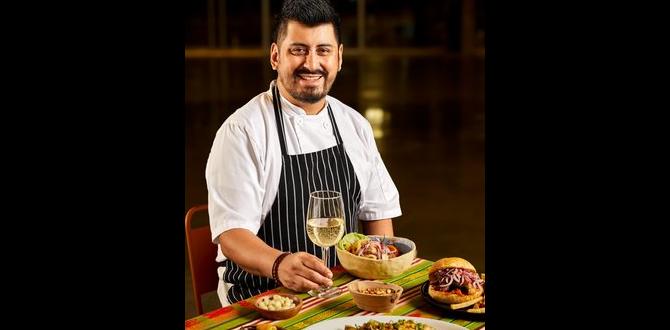Discovering Dolomites rifugio dining is about savoring hearty Italian mountain cuisine in stunning alpine settings. This guide will walk you through everything you need to know to enjoy delicious meals and drinks at these iconic mountain huts, making your Dolomite adventure truly unforgettable. We’ll cover booking, what to expect, essential etiquette, and must-try dishes, ensuring a delightful experience.
Imagine this: you’ve spent a glorious day hiking through breathtaking Dolomite peaks, the kind of scenery that leaves you speechless. As your muscles gently ache and the sun begins to dip, you spot it – a cozy mountain hut, a ‘rifugio,’ promising warmth, delicious food, and incredible views. But what exactly is Dolomites rifugio dining? It’s more than just a meal; it’s an integral part of the Dolomite hiking experience, offering a taste of authentic South Tyrolean culture and sustenance that’s both delicious and energizing.
Many first-time visitors might feel a little unsure about what to expect. Can you just walk in? What kind of food will they serve? Do you need to book? These questions are common, and we’re here to bring you all the answers. This guide is designed to make your Dolomites rifugio dining experience as seamless and enjoyable as your hikes. We’ll break down how to find these gems, what to pack, how to order, and even a few local culinary secrets. Get ready to fuel your adventures with some of the best food the Alps have to offer!
Your Essential Dolomites Rifugio Dining Guide
Dolomites rifugio dining is a cornerstone of the mountain experience in this magical Italian region. These mountain huts, or ‘rifugi,’ are strategically located along hiking trails and offer hikers and climbers a place to rest, refuel, and often spend the night. The dining experience at a rifugio is often as much a draw as the majestic scenery itself.
Think of rifugi as rustic, welcoming oases in the high mountains. They serve a blend of Italian, Austrian, and Ladin (the indigenous culture of the Dolomites) cuisine. The atmosphere is usually convivial and relaxed, with hikers from all over the world sharing stories over hearty meals. Whether you’re a seasoned mountaineer or a casual day hiker, understanding the nuances of rifugio dining will enhance your trip.
What is a Rifugio?
A rifugio is a type of mountain hut typically found in alpine regions. In the Dolomites, these huts are often managed by families and serve as vital stopping points for hikers on multi-day treks or those exploring day trails. They range from simple shelters with basic amenities to more established establishments with comfortable rooms and extensive menus. Primarily, they offer meals, drinks, and often accommodation, making them indispensable for exploring the high trails.
The word “rifugio” itself means “refuge” in Italian, which perfectly encapsulates their purpose – a safe haven amidst the wild beauty of the mountains. Many have been in operation for generations, blending tradition with the necessities of modern-day mountaineering tourism.
Why Dine at a Rifugio?
There are countless reasons to make rifugio dining a key part of your Dolomite adventure:
- Authentic Local Cuisine: Experience traditional South Tyrolean dishes made with fresh, regional ingredients. This is a genuine taste of the mountains.
- Unbeatable Views: Most rifugi boast spectacular panoramic vistas. Enjoying a meal with such a backdrop is an unparalleled experience.
- Energy Boost: Rifugio meals are typically hearty and calorie-dense, perfect for refueling after a strenuous hike and preparing for the next leg of your journey.
- Cultural Immersion: Connect with local hosts, other hikers, and soak in the unique alpine culture that blends Italian and Austrian influences.
- Convenience: For trekkers on longer routes, rifugi provide essential sustenance without needing to carry heavy food supplies from the start.
Planning Your Rifugio Dining Experience
While rifugio dining is generally straightforward, a little pre-planning can ensure a smoother experience, especially during peak season. Understanding how to find them, when to go, and what to expect will set you up for success.
Finding Rifugi
Dolomites rifugi are well-marked on most hiking maps. Popular trekking routes, like the Alta Via 1 or Alta Via 2, have numerous rifugi strategically placed a day’s hike apart. For day hikes, you can often find them accessed from cable car stations or trailheads.
Resources for finding rifugi:
- Detailed Topographic Maps: Look for symbols indicating mountain huts. Companies like Tabacco Maps are highly recommended for their accuracy in the Dolomites.
- Online Hiking Platforms: Websites and apps such as Komoot, Outdooractive, or AllTrails often list rifugi along suggested routes, complete with user reviews.
- Official Tourism Websites: The official tourism boards for South Tyrol and Trentino provide information on hiking trails and rifugi.
- Guidebooks: Many specialized hiking guidebooks for the Dolomites will detail rifugi and their amenities.
Reservations: A Crucial Step
During the peak hiking season (roughly June to September), rifugi can get extremely busy, especially at lunch. While some very remote rifugi might not require reservations for dining, it’s often a good idea, particularly if you’re hiking in a group or on a popular trail.
For overnight stays, reservations are almost always mandatory. For dining, especially lunch, calling ahead is highly recommended, particularly for well-known spots. This is also good practice if you have specific dietary needs. You can usually find contact information on the rifugio’s website or through online hiking platforms.
When to Visit and What to Expect
Rifugi typically open in late spring (May/June) and close in early autumn (September/October), though dates can vary. Some may offer limited services outside the main season. Operating hours for dining usually span from late morning through the afternoon. Many rifugi also offer breakfast for overnight guests and sometimes sell snacks and drinks for hikers to take away.
What to expect:
- Rustic Charm: Don’t expect Michelin-star ambiance. Rifugi are mountain huts, and their charm lies in their simplicity, sturdy construction, and connection to nature.
- Communal Seating: Especially at lunch, you might find yourself sharing tables with other hikers, which can be a great way to meet people.
- Self-Service Options: Some rifugi operate a partly self-service system, where you order at a counter and pick up your food. Others have table service.
- Hearty Portions: Meals are designed to replenish energy. Portions are generally generous.
- Cash is King (Often): While some rifugi accept cards, it’s always wise to carry some Euros in cash, as connectivity can be spotty, and some may prefer or only accept cash.
The Culinary Delights of Dolomites Rifugio Dining
The food served in Dolomites rifugi is a delicious reflection of the region’s cultural heritage, a delightful fusion of Italian heartiness and Austrian solidity, with a distinct Ladin influence. Prepare your taste buds for comforting, flavorsome dishes that are perfect for a mountain setting.
Must-Try Dishes
When you’re at a rifugio, there are certain dishes that are quintessential experiences. These are often simple, hearty, and incredibly satisfying:
- Canederli (Knödel): These are bread dumplings. They come in various forms: plain, with speck (smoked ham), cheese, or spinach, often served in a rich broth or with melted butter and cheese. In Austria, they’re widely known as Knödel, reflecting the region’s history.
- Schlutzkrapfen: These are half-moon shaped ravioli, typically filled with spinach and ricotta cheese, and often served with melted butter, grated Parmesan cheese, and chives. It’s a savory, comforting pasta dish.
- Speck: This is a dry-cured, lightly smoked ham originating from South Tyrol. It’s often served on a platter with bread and pickles, or used as an ingredient in many dishes, including Canederli.
- Goulash Soup: A robust, spicy beef stew, similar to Hungarian goulash but often adapted to local tastes. It’s perfect for a chilly mountain day.
- Polenta: Cornmeal porridge, often served creamy or grilled, and typically accompanying stews or meats.
- Strudel: While apple strudel (Apfelstrudel) is the most famous, you might also find versions with other fruits or even savory fillings. A perfect sweet ending.
- Cheeses: Many rifugi will offer local mountain cheeses, often served with bread, honey, or fruit preserves.
Local Specialties and Ladin Cuisine
The Dolomites are home to the Ladin people, an ethnic group with their own language and traditions. Ladin cuisine often features hearty, simple ingredients, reflecting the agricultural and pastoral life of the mountains. You might find dishes that are even more traditional and specific to certain valleys.
Look out for specific regional variations of the dishes mentioned above, or ask the rifugio staff about their “specialità della casa” (specialties of the house). These often highlight seasonal produce or time-honored family recipes.
Drinks to Enjoy
After a long hike, a refreshing drink is a welcome reward. Rifugi offer a variety of beverages:
- Local Wines: South Tyrol is a renowned wine-producing region. Enjoy a glass of local white wine like Gewürztraminer or Pinot Bianco, or a robust red like Schiava or Lagrein.
- Beers: Many rifugi serve excellent local beers, often from South Tyrolean breweries.
- Schnapps (Grappa/Acquavite): A small shot of local schnapps can be a warming digestif.
- Hot Chocolate/Tea/Coffee: Perfect for warming up on a cold morning or after a chilly descent.
- Water: While you can buy bottled water, many hikers also refill their bottles from natural springs, but always ensure you know they are potable sources. Check local advice or ask at the rifugio.
Dolomites Rifugio Dining Etiquette and Tips
To ensure a pleasant experience for yourself and others, and to show respect for the rifugio staff, a few simple etiquette points can go a long way.
Mountain Manners
- Be Patient: Service can sometimes be slower than you might be used to, especially during busy periods. The staff are often doing many jobs at once.
- Keep it Tidy: Pack out what you pack in. Dispose of any trash properly in designated bins. Leftover food shouldn’t be left on tables.
- Noise Levels: While it’s a social place, try to keep noise levels reasonable, especially if there are very young children or people seeking rest.
- Respect the Staff: The rifugio keepers and their staff work incredibly hard in challenging conditions. A friendly attitude and a “grazie” go a long way.
- Order Clearly: Speak clearly when ordering, and don’t be afraid to ask for recommendations.
What to Bring: The Essentials
While you don’t need to pack a full kitchen, a few items in your backpack can enhance your rifugio dining experience and preparedness:
- Cash: As mentioned, always have some Euros on hand.
- Reusable Water Bottle: Many rifugi are near fresh water sources, and it’s environmentally friendly.
- Snacks: Even with dining options, having a small energy bar or trail mix is always a good idea for hikes between rifugi.
- Lightweight Backpack: To carry your essentials comfortably.
- Simple Phrasebook (Optional): While Italian is universal, knowing a few basic German phrases (“Guten Tag,” “Danke”) can be very appreciated in German-speaking South Tyrol.
Understanding Menus
Menus are typically available in Italian and often German. Some English translations may be present, especially in more tourist-oriented rifugi.
Key terms to look for:
- Primo Piatto (First Course): Usually pasta, soup, or dumplings.
- Secondo Piatto (Second Course): Main course, typically meat or vegetarian dishes.
- Contorno (Side Dish): Vegetables or salads.
- Dolce (Dessert): Sweet treats.
- Bevande (Drinks): Beverages.
Dietary Restrictions
Many rifugi can accommodate common dietary restrictions like vegetarianism. For vegan or gluten-free needs, options might be more limited, but it’s always worth asking when you reserve. Communicating your needs in advance is key. A simple phrase like “Sono vegetariano/a” (I am vegetarian) or “Ho bisogno di cibo senza glutine” (I need gluten-free food) can help. Some rifugi are becoming more aware of these needs due to the increasing number of international tourists.
A great resource for understanding food ingredients and common allergens in Italian cooking can be found through resources like the Food Standards Australia New Zealand website on food allergy information, which provides general principles applicable to identifying ingredients across cuisines.
Beyond the Plate: The Rifugio Experience
Dolomites rifugio dining is more than just the food; it’s an experience that connects you to the mountains, the culture, and fellow adventurers. The atmosphere, the views, and the connection to nature all contribute to a memorable culinary journey.
Connecting with Nature
The setting of a rifugio is its most compelling feature. Perched on a mountain ledge, surrounded by dramatic cliffs and sweeping valleys, dining here is an immersive experience. You’re not just eating; you’re absorbing the grandeur of the Dolomites. The sounds of cowbells, the scent of pine, and the vast sky create a sensory feast that complements the food beautifully.
Social Aspects
Rifugi are inherently social places. At dinner tables, you’ll often find yourself chatting with hikers from different countries, sharing stories of your day’s trek, and swapping recommendations for future routes. This camaraderie among mountain lovers is a cherished part of the rifugio culture. Many rifugi have common rooms or outdoor terraces perfect for relaxing and socializing before or after your meal.
Sustainability in the Mountains
Given their remote locations, sustainability is a growing consideration for rifugi. Many are committed to reducing their environmental impact. This can include implementing waste management systems, sourcing local produce to minimize transportation, and utilizing renewable energy sources.
The UNESCO World Heritage status of the Dolomites underscores the importance of preserving these natural landscapes. Supporting rifugi that adhere to sustainable practices helps ensure these magnificent mountains remain pristine for generations to come.
Frequently Asked Questions (FAQ) about Dolomites Rifugio Dining
Here are some common questions beginner hikers might have about rifugio dining:
Q1: Do I need to reserve a table for lunch?
A: It’s highly recommended, especially during peak season (July-August) and for popular rifugi. Calling ahead or checking their website can save you disappointment.
Q2: What’s the difference between a rifugio and a bivacco?
A: A rifugio is a staffed mountain hut offering food, drink, and accommodation, usually with beds in dormitories or private rooms. A bivacco is a basic, unstaffed shelter, often just a roof over your head and possibly some blankets, with no services like food or water.
Q3: Can I pay with a credit card?
A: Some larger or more modern rifugi accept credit cards, but it’s not guaranteed, and smaller or more remote ones may be cash-only. Always carry sufficient cash.
Q4: What time do rifugi serve meals?
A: Dining hours vary. Lunch is typically served from around 11:30 AM to 2:00 PM or 3:00 PM. Dinner for overnight guests is usually around 6:00 PM to 7:30 PM. Check specific rifugio times.
Q5: Is it okay to just stop for a drink?
A: Absolutely! Rifugi welcome hikers for drinks and snacks. It’s a great way to rest and enjoy the views without committing to a full meal.
Q6: What should I wear to dine at a rifugio?
A: Casual, hiking attire is perfectly acceptable. Many hikers change into warmer layers or “hut shoes” indoors. There’s no need for formal wear; comfort is key.
Q7: Can I refill my water bottle at a rifugio?
A: Many rifugi have access to fresh mountain water sources, and you can often refill your bottles for free or a small fee. It’s always best to ask the staff first,






